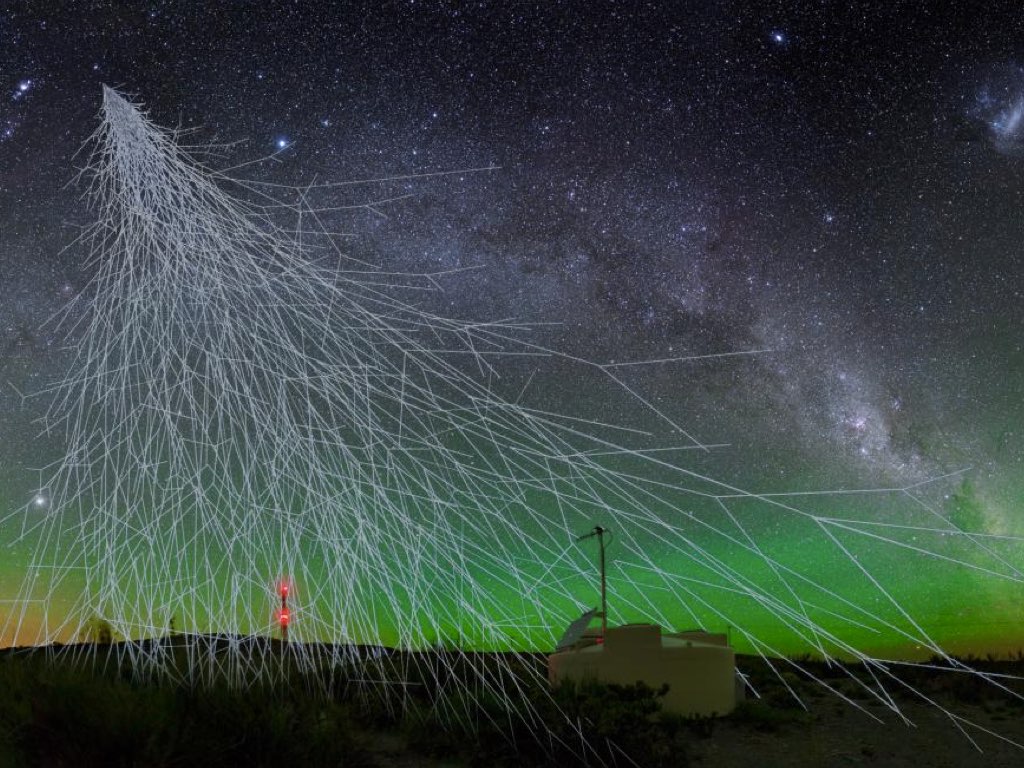Insights on the muon puzzle
"Results from the Pierre Auger collaboration give, for the first time, an experimental indication of the origin of the muon puzzle in high-energy cosmic rays. The work, developed by the LIP group, has just appeared in Physical Review Letters"

Cosmic ray interactions in Earth’s atmosphere produce showers of particles, among them muons. For the highest energy cosmic rays, the average number of muons produced exceeds the expectations of the best models we have to simulate such processes. This became known as the “muon puzzle”. The Pierre Auger collaboration has now published results that for the first time give an experimental indication of the origin of the muon puzzle. The data analysis and interpretation have been developed by the LIP group in Auger and has just appeared in the April issue of Physical Review Letters [1].
The results show that while the average number of muons does not match the predictions, the fluctuations around that number (now measured for the first time) are well described by the models. While the muons are produced all along showers, and so the average number at ground depends on the details of the chain of interactions in the atmosphere, the fluctuations are seeded in the high energy, first few interactions at the beginning of showers. This was demonstrated in a phenomenological work also published by members of the Auger-LIP group [2].
The combined results are compatible with the muon deficit originating from small deviations in the predictions from hadronic interaction models of particle production that accumulate as the showers develop. This is the first experimental indication that the cause of this discrepancy is not in the highest energy interactions but in the accumulation of small discrepancies along the showers.
Current high-energy hadronic interaction models have been tuned using LHC data. If the difference in the number of muons would arise from the first few interactions shower interactions, which happen at energies much above LHC’s, it could be explained by a change in the nature of hadronic interactions at high energies. Conversely, the new result implies that the nature of hadronic interactions does not significantly change at the highest energies, constraining exotic scenarios and reducing hadronic uncertainties.
It also implies that in the long run the way to solve the muon problem is to accurately describe particle production across the broad range of energies within reach of current accelerators, in order to reduce the uncertainties due to hadronic interactions. This is a fundamental step towards disentangling the effect of the description of hadronic interactions from that of cosmic-ray composition, allowing for a solid interpretation of shower measurements in terms of the composition of the highest energy cosmic rays.
[1] Physical Review Letters 126 1520002 (2021)
[2] Physics Letters B 784 (2018) 68-76




